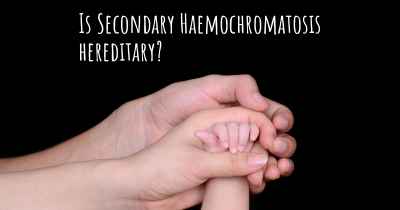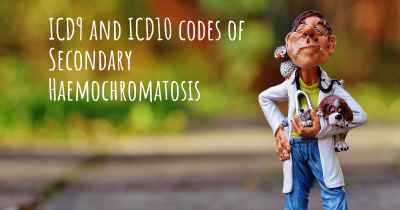What is the history of Secondary Haemochromatosis?
When was Secondary Haemochromatosis discovered? What is the story of this discovery? Was it coincidence or not?

Secondary haemochromatosis, also known as acquired haemochromatosis, is a medical condition characterized by excessive iron accumulation in the body. Unlike primary haemochromatosis, which is a hereditary disorder, secondary haemochromatosis is caused by other underlying conditions or factors. This condition can lead to various complications if left untreated. Understanding the history of secondary haemochromatosis helps shed light on its discovery, development, and management over time.
The concept of haemochromatosis dates back to ancient times, with early descriptions of iron overload symptoms found in ancient Egyptian and Greek medical texts. However, it wasn't until the 19th century that haemochromatosis was recognized as a distinct clinical entity. In 1865, the French physician Armand Trousseau first described primary haemochromatosis, which is now known as hereditary haemochromatosis. This form of haemochromatosis is caused by a genetic mutation that affects iron metabolism.
Secondary haemochromatosis, on the other hand, was not clearly distinguished until later. In the early 20th century, researchers began to identify cases of iron overload that were not associated with the genetic mutation seen in primary haemochromatosis. These cases were often linked to other underlying conditions, such as chronic liver disease, excessive blood transfusions, or certain types of anemia.
Over time, medical advancements and research have provided a deeper understanding of the causes and mechanisms behind secondary haemochromatosis. It has been recognized that chronic liver diseases, such as alcoholic liver disease, viral hepatitis, and non-alcoholic fatty liver disease, can lead to iron overload in the body. Additionally, conditions like thalassemia, myelodysplastic syndromes, and certain types of anemia can also contribute to secondary haemochromatosis.
The diagnosis and management of secondary haemochromatosis have evolved alongside medical progress. Diagnostic techniques, such as blood tests to measure serum ferritin levels and genetic testing for primary haemochromatosis, have become essential tools in identifying and differentiating between the two forms of haemochromatosis. Imaging studies, such as magnetic resonance imaging (MRI) and liver biopsy, are also used to assess iron accumulation and organ damage.
Treatment strategies for secondary haemochromatosis primarily focus on addressing the underlying cause of iron overload. In cases where chronic liver disease is the underlying factor, management involves treating the liver condition itself, which may include lifestyle modifications, medication, or, in severe cases, liver transplantation. For individuals with secondary haemochromatosis due to excessive blood transfusions, reducing the frequency of transfusions or using iron chelation therapy may be recommended.
In recent years, research has also explored the potential benefits of therapeutic phlebotomy, a procedure that involves removing blood from the body to reduce iron levels, in managing secondary haemochromatosis. This approach has shown promising results in certain cases, particularly in individuals with chronic liver disease.
In conclusion, secondary haemochromatosis has a rich history intertwined with the understanding and advancements in the field of medicine. From its initial recognition as a distinct clinical entity to the identification of various underlying causes, the understanding and management of secondary haemochromatosis have significantly progressed. Ongoing research continues to shed light on this condition, leading to improved diagnostic techniques and treatment options for individuals affected by secondary haemochromatosis.








